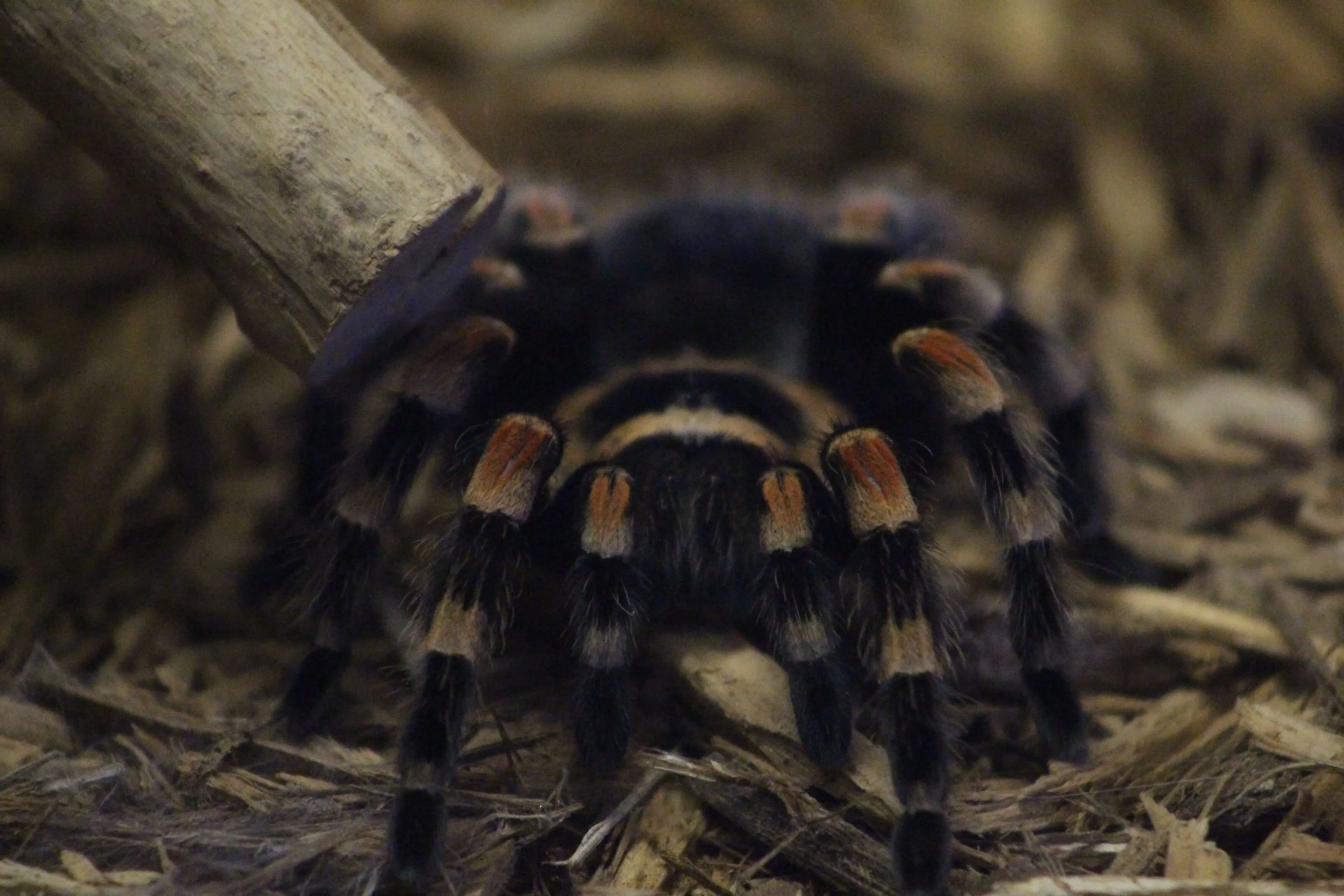Red Knee Tarantula Care Top 5 Tips!
The Red Knee Tarantula, or Brachypelma hamorii, is a popular pet choice due to its docile nature and striking appearance. Native to the arid scrublands of Mexico, these beautiful creatures require specific care to thrive in captivity. This care sheet will provide you with the top 5 essential tips to ensure your Red Knee Tarantula lives a long and healthy life. From choosing the right enclosure to understanding their feeding habits, this guide covers everything you need to know to become a successful tarantula keeper. Remember, responsible pet ownership is key to the well-being of these fascinating arachnids. With the right knowledge and care, you can enjoy the company of your Red Knee Tarantula for many years to come.
Choosing the Right Enclosure
The enclosure is the foundation of your Red Knee Tarantula’s habitat. It provides a secure and comfortable space where your tarantula can thrive. Selecting the right enclosure is crucial for its well-being, allowing it to exhibit natural behaviors and avoid unnecessary stress. A well-designed enclosure also simplifies the process of maintaining proper humidity and temperature levels. A proper enclosure should be escape-proof and allow for proper ventilation, as well as easy access for feeding and maintenance. The size and features of your enclosure directly impact your tarantula’s health and happiness, so choosing the right one is one of the most important aspects of tarantula care.
Enclosure Size
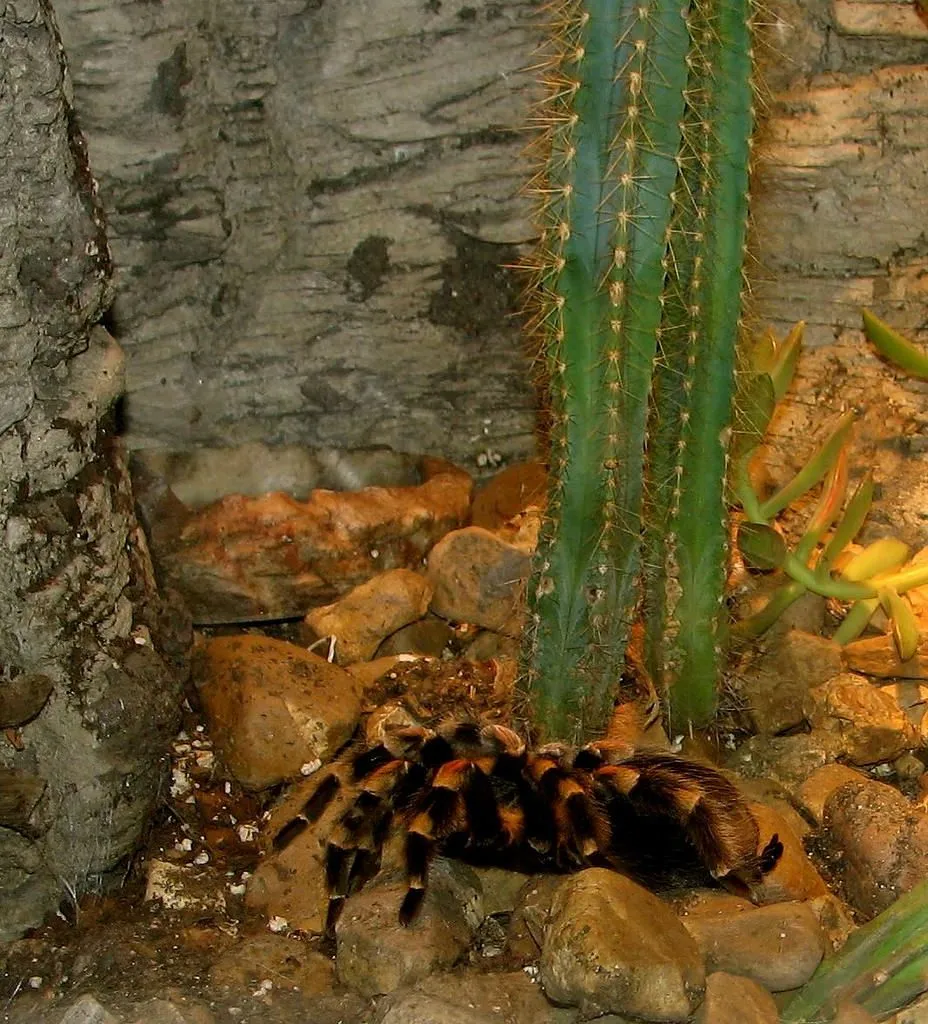
Size matters when it comes to a Red Knee Tarantula’s enclosure. A juvenile tarantula will need a smaller space than a fully grown adult. A good rule of thumb is to provide an enclosure that is roughly three times the tarantula’s leg span in length and width. For a fully grown adult, a 10-20 gallon terrarium is often sufficient. Make sure the enclosure has a secure lid to prevent escapes. The enclosure should also be tall enough to allow for the tarantula to burrow if it chooses to. Adequate space reduces stress and allows for natural behaviors such as burrowing and foraging. A cramped enclosure can lead to stress, which can impact their health and lifespan. Selecting the right size at the beginning will save you from having to upgrade later as your tarantula grows.
Substrate Selection
The substrate is the bedding material that lines the bottom of the enclosure. It plays a crucial role in maintaining humidity and providing a comfortable environment for your tarantula. For Red Knee Tarantulas, a substrate that retains moisture is ideal. A mixture of coconut fiber (eco-earth), peat moss, and a small amount of vermiculite works well. The substrate should be deep enough to allow the tarantula to burrow, typically 4-6 inches. Avoid using substrates that are dusty or contain harmful chemicals. The depth of the substrate is important for creating a comfortable environment for your tarantula. Regular substrate changes are essential to prevent mold and bacterial growth, ensuring a healthy environment for your pet. Properly chosen substrate allows the tarantula to express its natural behaviors.
Providing Proper Humidity and Temperature
Maintaining the correct humidity and temperature levels is vital for the health of your Red Knee Tarantula. These tarantulas are native to a specific climate, and replicating these conditions in captivity is crucial to their well-being. Both humidity and temperature play significant roles in their molting process, feeding habits, and overall health. Monitoring these environmental factors regularly and making necessary adjustments will ensure your tarantula’s comfort and longevity. This requires understanding of their natural environment and replicating it as closely as possible.
Maintaining Humidity Levels
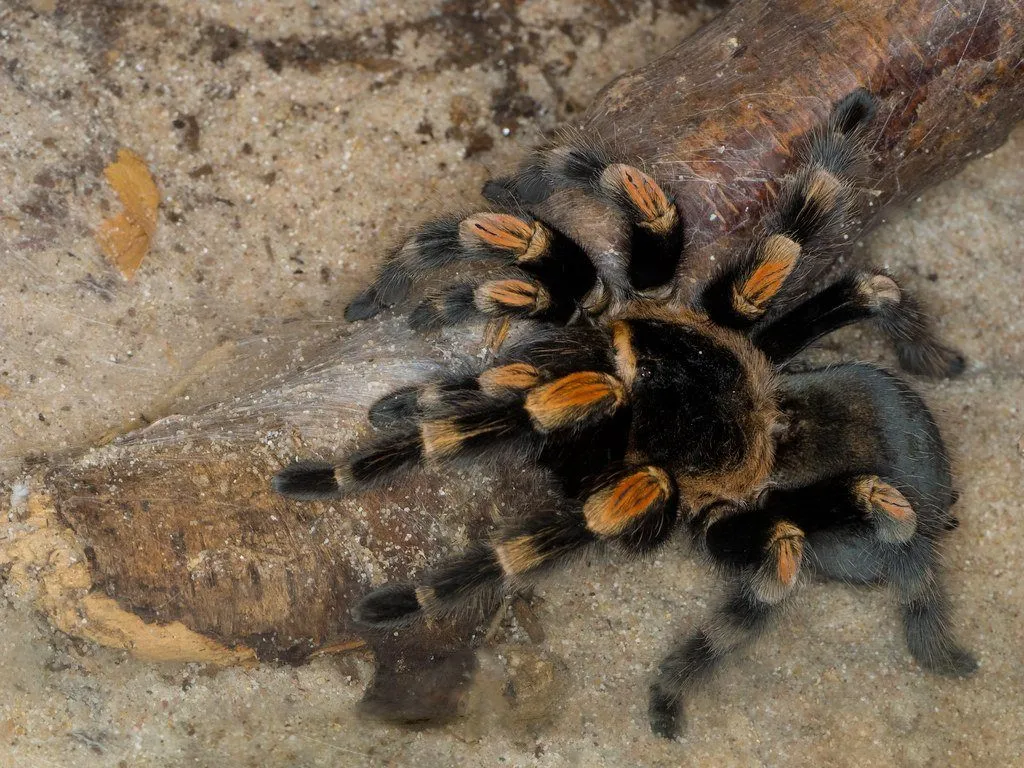
Red Knee Tarantulas thrive in moderate humidity levels, typically between 60% and 70%. You can measure the humidity using a hygrometer, a device that measures the humidity. To maintain the proper humidity, you can lightly mist the enclosure once or twice a week, being careful not to over-saturate the substrate. Good ventilation is also important to prevent mold growth. Ensure the enclosure has cross-ventilation. Avoid placing the enclosure in direct sunlight or near a heat source, as this can quickly dry out the environment. Monitoring humidity levels regularly is key to providing a stable environment for your tarantula, making adjustments as needed to maintain the ideal range for their health and happiness.
Temperature Requirements
The ideal temperature range for a Red Knee Tarantula is between 75°F and 85°F (24°C and 29°C). In most homes, this temperature range can be achieved without additional heating. If your home is cooler, you can use a low-wattage heat lamp or a heat mat attached to the side of the enclosure. Avoid placing the heat source directly under the enclosure, as this can overheat the substrate and harm the tarantula. Always monitor the temperature with a thermometer. Provide a temperature gradient within the enclosure, allowing the tarantula to choose its preferred spot. Proper temperature regulation supports their metabolism, feeding, and molting cycles, contributing to their overall well-being and longevity.
Feeding Your Red Knee Tarantula
Proper feeding is another key aspect of Red Knee Tarantula care. Providing the right food at the right frequency will help your tarantula grow and thrive. They are opportunistic feeders, meaning they will eat almost anything they can catch and subdue. However, a balanced diet is crucial for their health. Understanding their dietary needs and providing appropriately sized prey will ensure your tarantula receives the necessary nutrients to stay healthy. Avoid overfeeding, and always remove any uneaten food items to prevent mold and bacteria growth in the enclosure. Careful attention to their feeding habits helps ensure their vitality and well-being.
Appropriate Food Choices
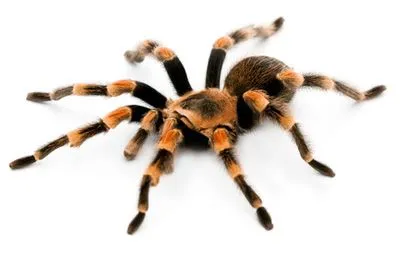
The primary diet for a Red Knee Tarantula consists of insects. Crickets, dubia roaches, and mealworms are all excellent choices. The size of the prey should be appropriate for the size of the tarantula; the rule of thumb is that the prey should be no larger than the tarantula’s abdomen. Offer a variety of insects to ensure your tarantula receives a balanced diet. Before feeding, it is recommended to gut-load the insects with nutritious food to ensure your tarantula receives essential vitamins and minerals. Avoid feeding wild-caught insects, as they may carry parasites or pesticides. Regularly inspect the enclosure for uneaten food and remove it to maintain cleanliness. Proper prey choices are paramount in providing optimal nourishment to your tarantula.
Feeding Frequency
The feeding frequency depends on the age and size of the tarantula. Spiderlings and juvenile tarantulas can be fed 2-3 times a week. Adult tarantulas can be fed every 1-2 weeks. Always monitor your tarantula’s abdomen; a well-fed tarantula will have a plump abdomen. Reduce the feeding frequency if the tarantula appears to be overweight. Always provide fresh water, even if the tarantula is not actively eating. Also, avoid handling the tarantula immediately after feeding, as this can cause stress. Feeding habits can be a useful indicator of the tarantula’s overall health and should be carefully observed to maintain optimal well-being.
Watering and Hydration
Providing clean water is crucial for the hydration of your Red Knee Tarantula. While they get some moisture from their food, having access to fresh water is essential. Regular access to fresh water keeps your tarantula hydrated, aids in molting, and supports overall health. Ensuring a readily available water source is a simple but vital part of their care. Always monitor water levels to ensure their hydration needs are being met.
Providing Fresh Water
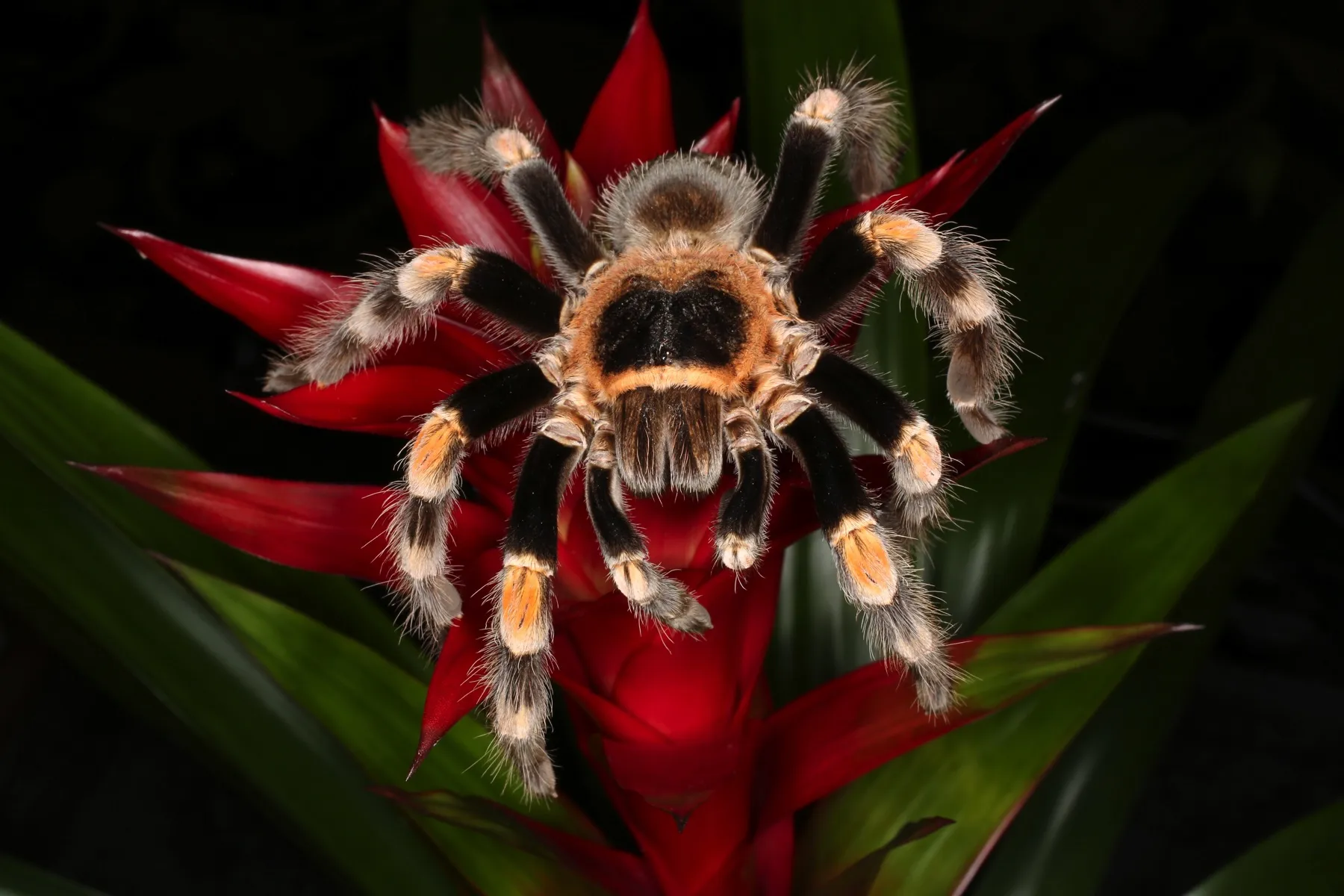
Provide fresh water in a shallow dish. The dish should be shallow enough to prevent the tarantula from drowning. Use a water dish that is easily accessible. Change the water regularly, ideally every 1-2 days, to prevent bacterial growth. Alternatively, you can use a water gel, which reduces the risk of drowning. Never use tap water directly; use dechlorinated water or bottled spring water. Ensuring the water dish is always clean and accessible will maintain your tarantula’s health and well-being.
Misting for Humidity
In addition to providing a water dish, you can mist the enclosure to maintain humidity levels. Use a spray bottle filled with dechlorinated water. Mist the enclosure lightly, taking care not to oversaturate the substrate. Mist the enclosure once or twice a week, or as needed, based on humidity readings. Misting the enclosure also allows the tarantula to drink water droplets that form on the enclosure’s walls. Regular misting will help maintain the proper humidity levels, supporting the molting process and overall health of the Red Knee Tarantula. The misting frequency should be adjusted depending on your local climate and the enclosure’s ventilation to prevent the growth of mold.
Handling and Safety
Handling a Red Knee Tarantula should be done with caution. While they are generally docile, they can still bite if they feel threatened. Always prioritize the tarantula’s safety and comfort. Understanding their behaviors and reactions is key to safe handling. If you choose to handle your tarantula, make sure to do so with the utmost care. Remember that tarantulas can be easily injured, so it is best to handle them as little as possible to avoid accidents and stress. Proper handling practices are essential to ensure both your safety and the well-being of your Red Knee Tarantula.
Safe Handling Practices
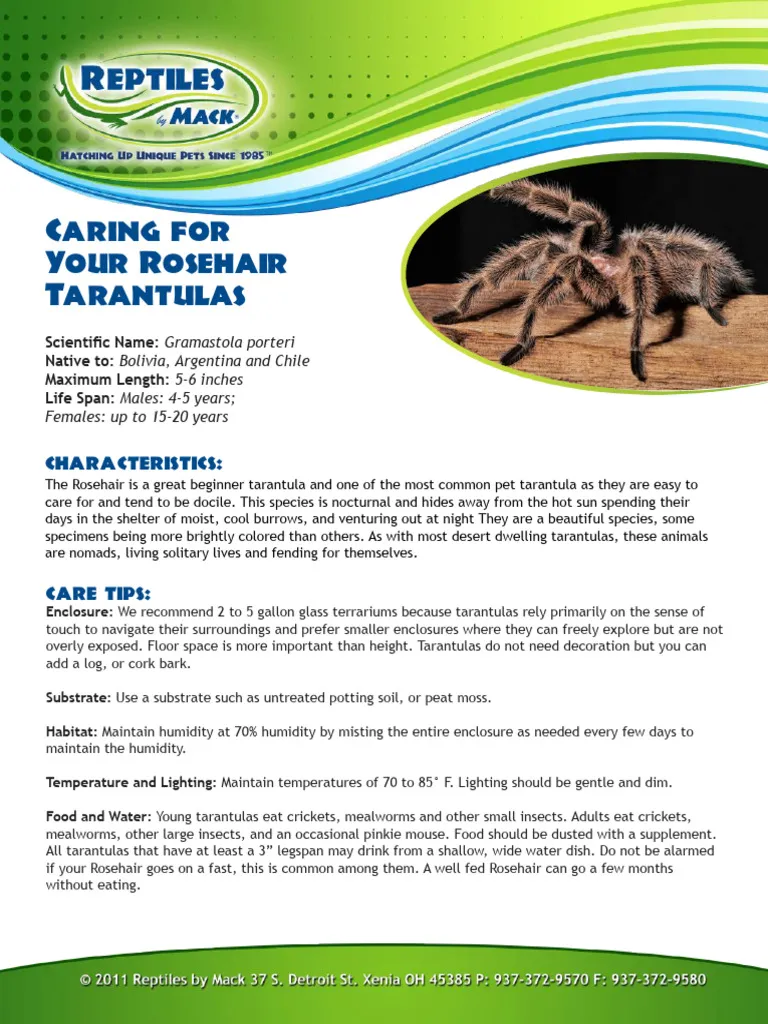
If you decide to handle your Red Knee Tarantula, do so with a gentle and careful approach. Wash your hands thoroughly before and after handling. Move slowly and avoid sudden movements. Handle the tarantula over a soft surface, like a bed or carpet, to minimize the risk of injury if it falls. Never handle a tarantula if it is stressed or about to molt. Avoid grabbing or squeezing the tarantula. Encourage the tarantula to walk onto your hand rather than picking it up. If the tarantula shows any signs of stress, such as raising its front legs or flicking hairs, gently put it back in its enclosure. Prioritize the tarantula’s well-being over interaction.
Recognizing Signs of Stress
Knowing how to recognize the signs of stress is critical to caring for your Red Knee Tarantula. These signs can indicate discomfort or a need for adjustment in the enclosure’s environment. Recognizing stress signs helps you to provide the best care for your tarantula. Common signs of stress include flicking hairs from the abdomen, raising the front legs in a defensive posture, or refusing to eat. A stressed tarantula may also become very reclusive, hiding in its burrow for extended periods. If you observe any of these signs, evaluate the enclosure’s environment: check humidity, temperature, and ensure the tarantula has access to water. Avoid handling the tarantula until it shows signs of relaxation. Adjusting the environment and minimizing disturbances can alleviate stress and promote the well-being of your tarantula.
In conclusion, caring for a Red Knee Tarantula can be a rewarding experience. By following these top 5 tips – choosing the right enclosure, maintaining proper humidity and temperature, providing appropriate feeding and watering, and practicing safe handling – you can ensure your tarantula lives a long, healthy, and happy life. Always remember to observe your tarantula, learn its behaviors, and make any necessary adjustments to provide the best possible environment. Responsible ownership and a commitment to understanding their needs will allow you to enjoy your fascinating pet for many years to come.
